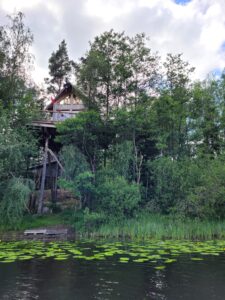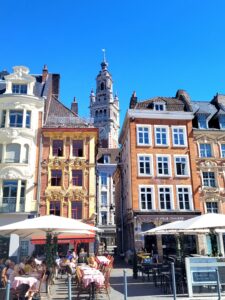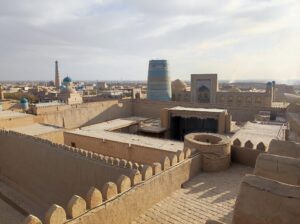Dublin’s rich and fascinating history stretches back over a thousand years, beginning with the Vikings. In the 9th century, these seafaring Norsemen established a settlement on the southern bank of the River Liffey, which they called Dubh Linn (meaning “Black Pool”). This small settlement laid the foundation for the vibrant city we know today. By the early 11th century, Ireland’s High King, Brian Boru, achieved a significant victory over the Vikings at the Battle of Clontarf in 1014, a defining moment that reshaped the power dynamics of the island. The roots of British rule in Ireland trace back to the Anglo-Norman invasion of the 12th century. This invasion, undertaken in 1169 on behalf of England’s King Henry II, laid the foundation for centuries of English, and later British, dominance over Ireland. The long history of British rule in Ireland officially began to unravel in the early 20th century, with the Irish War of Independence (1919–1921) leading to the creation of the Irish Free State in 1922. This marked the end of British governance over much of the island, though Northern Ireland remained part of the United Kingdom, an arrangement that continues to shape political dynamics today.
Irish Gaelic, known as Gaeilge, holds a unique and cherished place in Ireland’s cultural and national identity. Recognized constitutionally as the first official language of the Republic of Ireland. Ireland’s folklore is a treasure trove of stories filled with fairies, elves, and other magical beings that capture the imagination and reflect the spirit of the Irish people.
Did you know that Halloween, celebrated worldwide today with costumes, candy, and spooky decorations, has its roots in ancient Ireland? The modern holiday traces back to the Celtic festival of Samhain (pronounced Sow-in), a tradition that began over 2,000 years ago.
Dublin’s Vibrant Bar Scene
Dublin is a city filled with friendly people, delicious food, and endless things to explore. The warmth of the locals, the inviting atmosphere, and the city’s unique charm all come together to make it a place you can’t help but love. Casual conversations with strangers often surprise you with their humor and kindness, and for me, that was one of the most memorable aspects of the city.
While Dublin boasts a rich history and an impressive array of museums, I didn’t quite experience that “wow” moment I expected. Some areas of the city felt a bit worn and neglected, which slightly dulled its appeal. Still, despite this, I found myself falling in love with the city, drawn in by its unmistakable character and heart.
Temple Street is the most famous street for bars in Dublin and one of the city’s top tourist attractions. It’s a vibrant, bustling area filled with pubs, restaurants, and live music, making it a must-visit for anyone new to the city. However, while it draws thousands of visitors each year, locals often view it as overrated.
When it comes to discovering the best bars in Dublin, you’ll find countless tips online guiding you toward the city’s most popular spots. But I have to admit, I didn’t follow any of those suggestions. Instead, I took a more spontaneous approach—simply wandering around and enjoying the adventure. If I saw a place that looked inviting, I’d walk in and give it a try. One thing that quickly became clear is that bars are everywhere in Dublin. Whether you’re in the city center or a bit further out, it’s hard to walk more than a few blocks without stumbling upon a charming pub or trendy bar. Some of the most famous bar streets in Dublin include Baggot Street, Phibsborough Road, Wexford Street/Camden Street, Ranelagh Road, and South William Street.
If you’re visiting Dublin, I highly recommend booking a guided tour of the Jameson Distillery and the Guinness Storehouse. These iconic attractions provide a unique opportunity to immerse yourself in the rich history and heritage of two of Ireland’s most beloved beverages—Irish whiskey and Guinness stout.
Many of Dublin’s pubs and restaurants feature live traditional music sessions, with some even hosting performances that include Irish dancing. Irish folk music is an essential part of the country’s cultural heritage, celebrated for its beautiful melodies, storytelling, and its deep connection to Ireland’s history. The songs often tell stories of love, loss, hardship, and triumph, passed down through generations to preserve the tales of Irish life, struggles, and victories. Alongside the music, Irish traditional dancing adds another layer to the experience. The rhythmic energy of step dancing, famously showcased in performances like Riverdance , captivates audiences as dancers stomp out intricate footwork in perfect time with the music. It’s an unforgettable experience that brings the rich traditions of Ireland to life, right before your eyes.
The Liberties- The historical heart of Dublin
The historical heart of Dublin is known as The Liberties, one of the city’s oldest and most storied neighborhoods. Its history is deeply intertwined with that of Dublin itself, which traces its origins back to two small settlements established in the 9th century. Among the city’s most iconic historical landmarks are Dublin Castle, Christ Church Cathedral, Malahide Castle, St. Patrick’s Cathedral, and the Glasnevin Cemetery Museum. These sites offer a glimpse into Dublin’s rich past, from its medieval roots to the moments that shaped modern Ireland.

One of Dublin’s most famous and historically significant tourist attractions is the Book of Kells, a stunningly intricate manuscript that dates back to the 9th century. Housed in the Trinity College Library, it is a masterpiece of medieval art. You can only view the manuscript for a few seconds, and photography is not allowed, which can be disappointing.
Modern Dublin
The Samuel Beckett Bridge is one of Dublin’s most striking and modern landmarks, offering a beautiful contrast to the city’s historic architecture. This pedestrian and cyclist bridge spans the River Liffey, connecting Guild Street on the north bank to Sir John Rogerson’s Quay on the south bank. Named after the famous Irish playwright Samuel Beckett, the bridge is not only a functional piece of infrastructure but also an iconic symbol of Dublin’s contemporary vibe.
Atlantic Ocean
Dublin is located on the Atlantic Ocean, offering the opportunity to explore beautiful beaches and stunning coastal scenery. If you visit during the summer and are lucky with the weather, it can be a perfect destination for beach lovers. However, as you may know, rain is a constant in Dublin throughout the year, so luck with the weather is definitely needed. During my visit in October, it rained the entire time, so I couldn’t fully enjoy the ocean views. Instead, I made the most of the charming neighborhoods along the coast, with their lovely streets and cozy bars.
Day tours
Dublin offers the opportunity to embark on day tours to explore some of the most stunning natural wonders of Ireland, including the Cliffs of Moher, the Wicklow and Glendalough Tour, the Celtic Boyne Valley Day Trip, and many more.
For book lovers, it’s interesting to know that Dublin was home to some of the world’s most famous writers, including James Joyce, Oscar Wilde, Jonathan Swift, and Bram Stoker. The city was also the home of Samuel Beckett, known for his plays, and William Butler Yeats, a famous poet.




